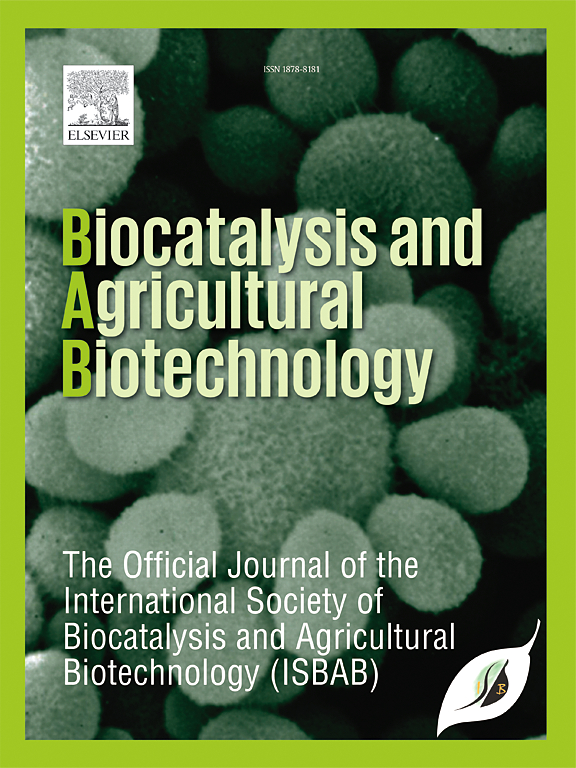Influence of different drying techniques on physicochemical and techno-functional properties, gelatinization, pasting behaviors, and morphology of bitter yam (Dioscorea bulbifera L.)
IF 3.8
Q2 BIOTECHNOLOGY & APPLIED MICROBIOLOGY
引用次数: 0
Abstract
This study investigates the influence of various drying methods—sun drying (SD), shade drying (SHD), hot air drying (HAD), microwave drying (MWD), infrared drying (IRD), and freeze-drying (FD)—on the physicochemical, nutraceutical, structural changes, and pasting properties of bitter yam flour. Scanning electron microscopy (SEM) analysis revealed that FD samples retained the original starch granule structure, while HAD and MWD samples exhibited substantial damage and variation in particle sizes. FD samples exhibited the highest levels of resistant starch (50.23 %), while IRD and MWD showed lower resistant starch levels (2.05 % and 2.03 %, respectively). Modern drying methods (HAD, MWD, IRD, and FD) achieved a moisture content of less than 10 %, ensuring safer, longer storage, with FD achieving the lowest moisture content (6.07 %). The HAD sample demonstrated the highest peak viscosity (732.17 mPas), suggesting better starch stability compared to MWD (377.17 mPas) and IRD (598.37 mPas). Nutraceutical analysis indicated that FD samples had retained the highest total flavonoid content (75.77 mg/g) and antioxidant activity (FRAP = 21.99 mM Fe (II)/g). These findings suggest that FD, compared to traditional drying methods, preserves the nutritional and functional properties of bitter yam flour.

不同干燥工艺对苦山药理化、工艺功能特性、糊化、糊化及形态的影响
研究了太阳干燥(SD)、遮阳干燥(SHD)、热风干燥(HAD)、微波干燥(MWD)、红外干燥(IRD)和冷冻干燥(FD)等不同干燥方法对苦山药面粉理化、营养、结构变化和糊化性能的影响。扫描电镜(SEM)分析显示,FD样品保留了原有的淀粉颗粒结构,而HAD和MWD样品的颗粒大小出现了明显的破坏和变化。FD样品抗性淀粉含量最高(50.23%),而IRD和MWD样品抗性淀粉含量较低(分别为2.05%和2.03%)。现代干燥方法(HAD、MWD、IRD和FD)实现了低于10%的水分含量,确保了更安全、更长的储存时间,FD实现了最低的水分含量(6.07%)。HAD样品显示出最高的峰值粘度(732.17 mPas),与MWD (377.17 mPas)和IRD (598.37 mPas)相比,表明淀粉稳定性更好。营养分析表明,FD样品的总黄酮含量最高(75.77 mg/g),抗氧化活性最高(FRAP = 21.99 mM Fe (II)/g)。研究结果表明,与传统干燥方法相比,FD干燥方法保留了苦山药粉的营养和功能特性。
本文章由计算机程序翻译,如有差异,请以英文原文为准。
求助全文
约1分钟内获得全文
求助全文
来源期刊

Biocatalysis and agricultural biotechnology
Agricultural and Biological Sciences-Agronomy and Crop Science
CiteScore
7.70
自引率
2.50%
发文量
308
审稿时长
48 days
期刊介绍:
Biocatalysis and Agricultural Biotechnology is the official journal of the International Society of Biocatalysis and Agricultural Biotechnology (ISBAB). The journal publishes high quality articles especially in the science and technology of biocatalysis, bioprocesses, agricultural biotechnology, biomedical biotechnology, and, if appropriate, from other related areas of biotechnology. The journal will publish peer-reviewed basic and applied research papers, authoritative reviews, and feature articles. The scope of the journal encompasses the research, industrial, and commercial aspects of biotechnology, including the areas of: biocatalysis; bioprocesses; food and agriculture; genetic engineering; molecular biology; healthcare and pharmaceuticals; biofuels; genomics; nanotechnology; environment and biodiversity; and bioremediation.
 求助内容:
求助内容: 应助结果提醒方式:
应助结果提醒方式:


